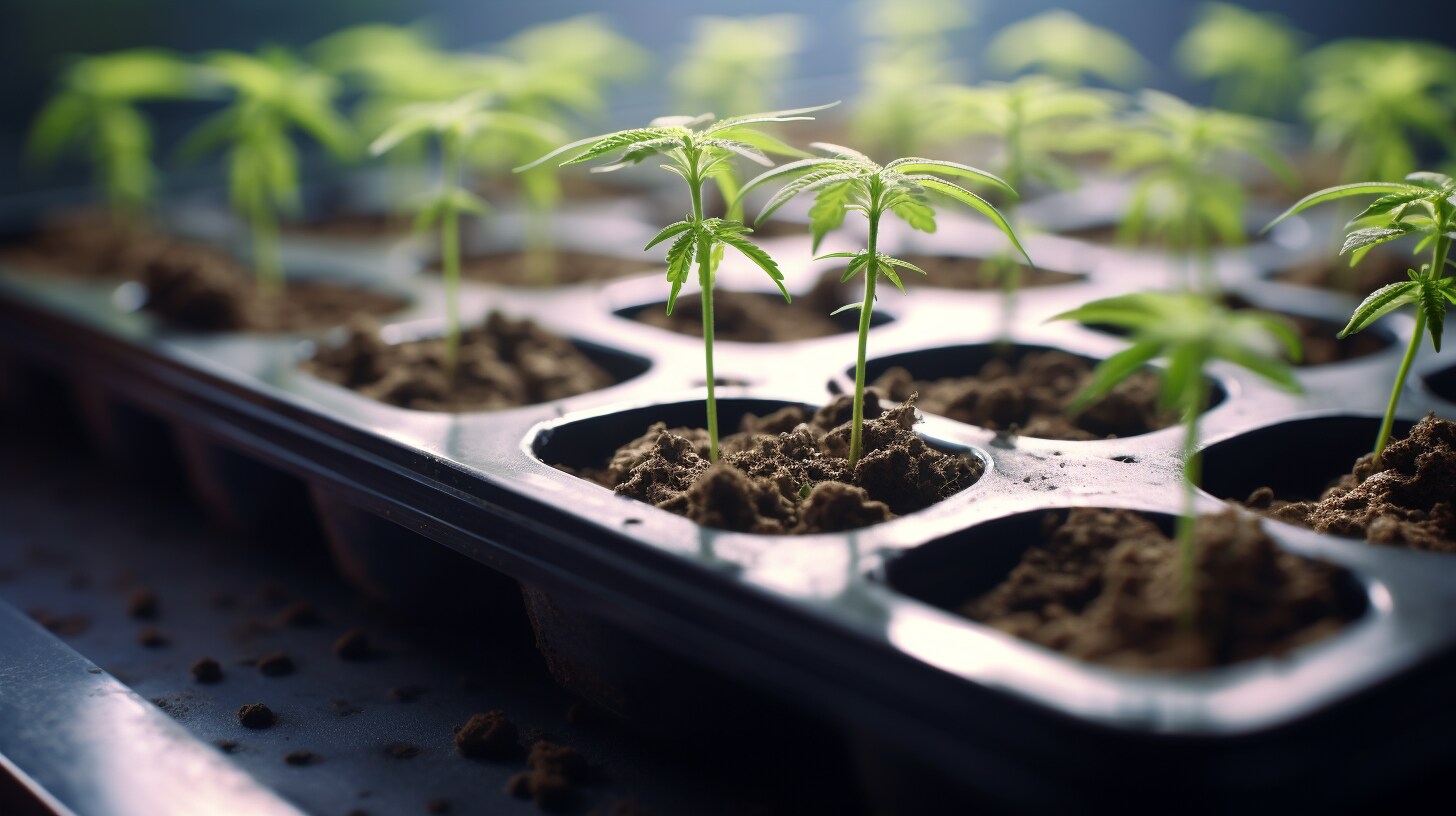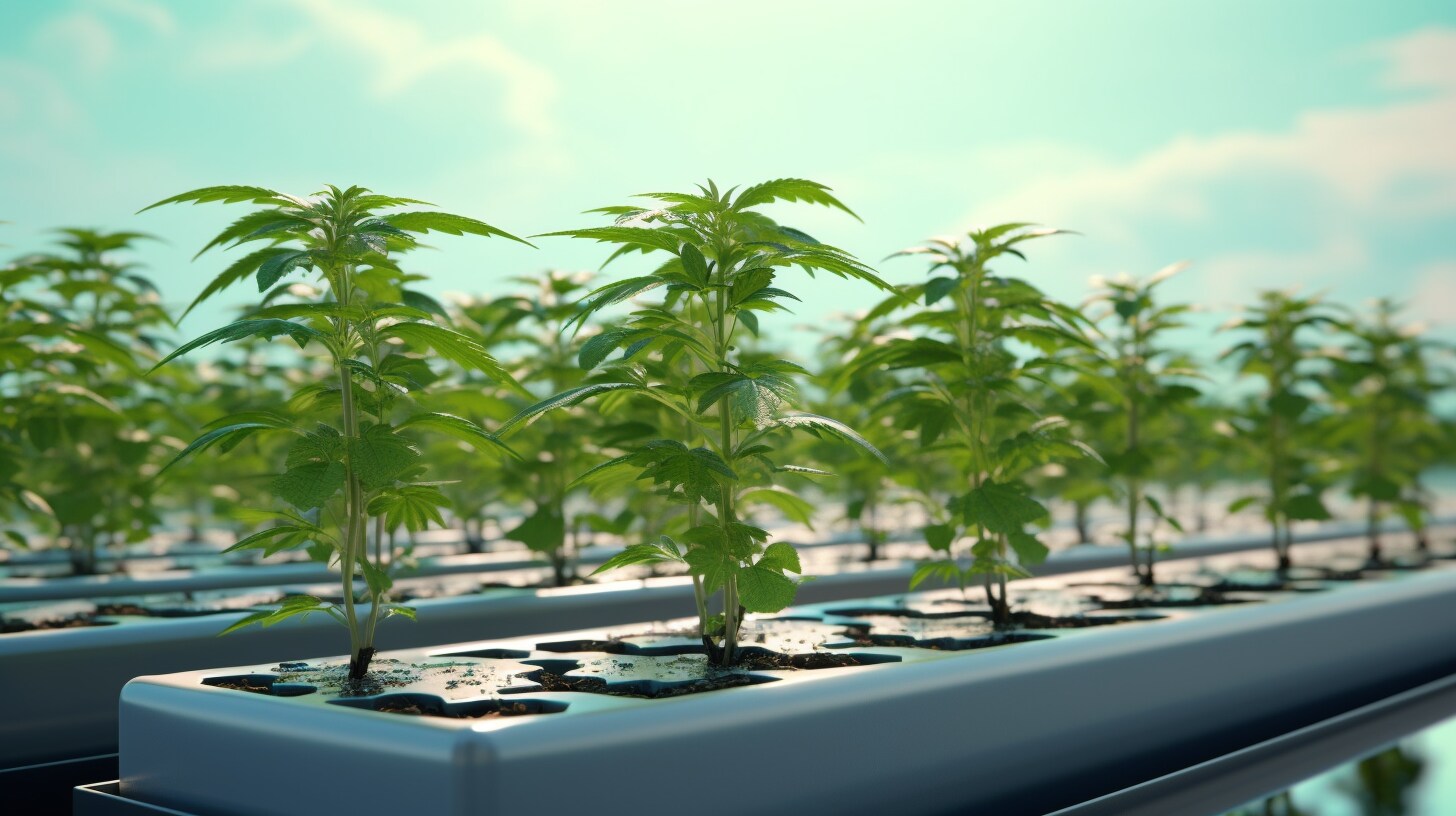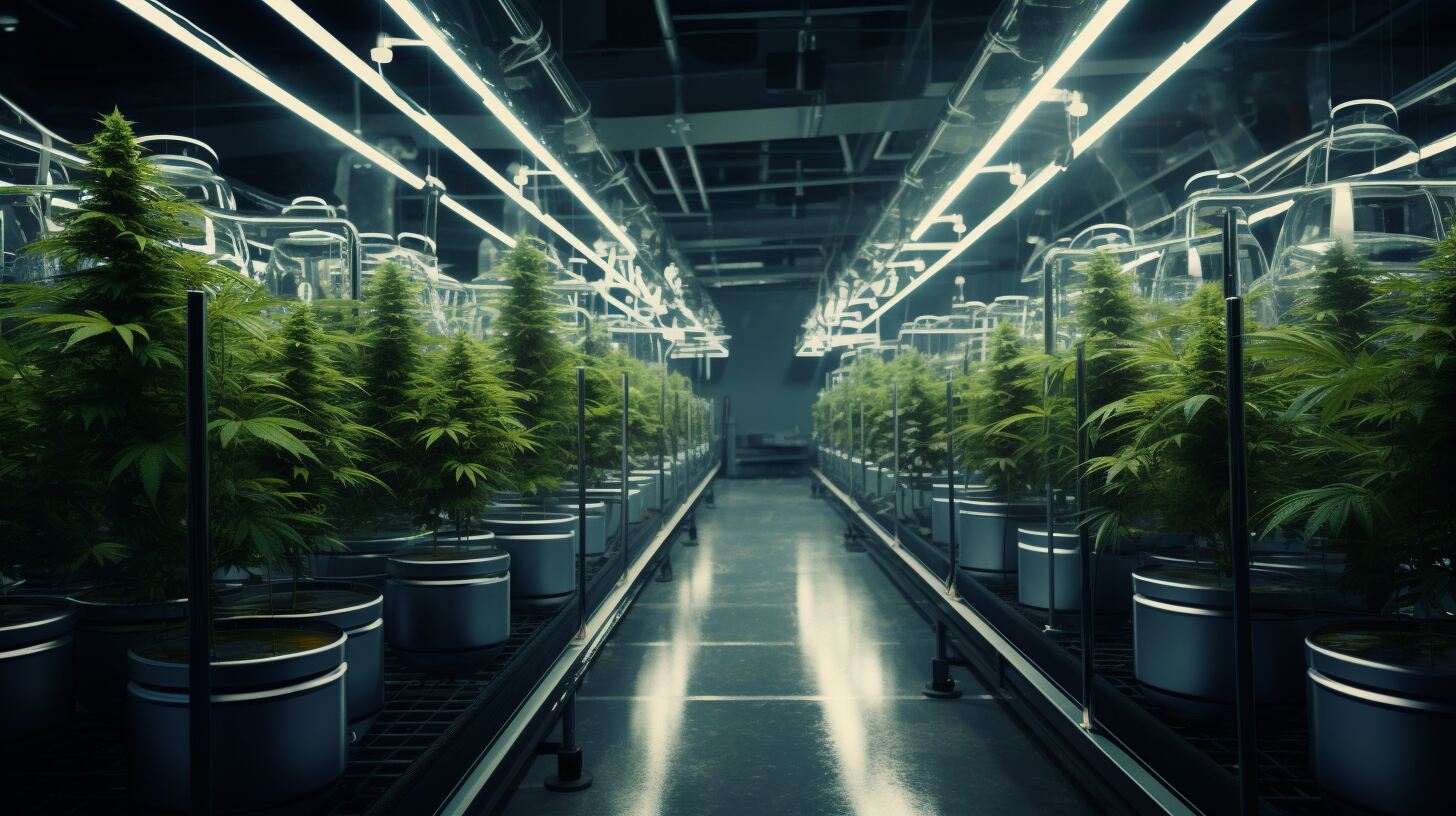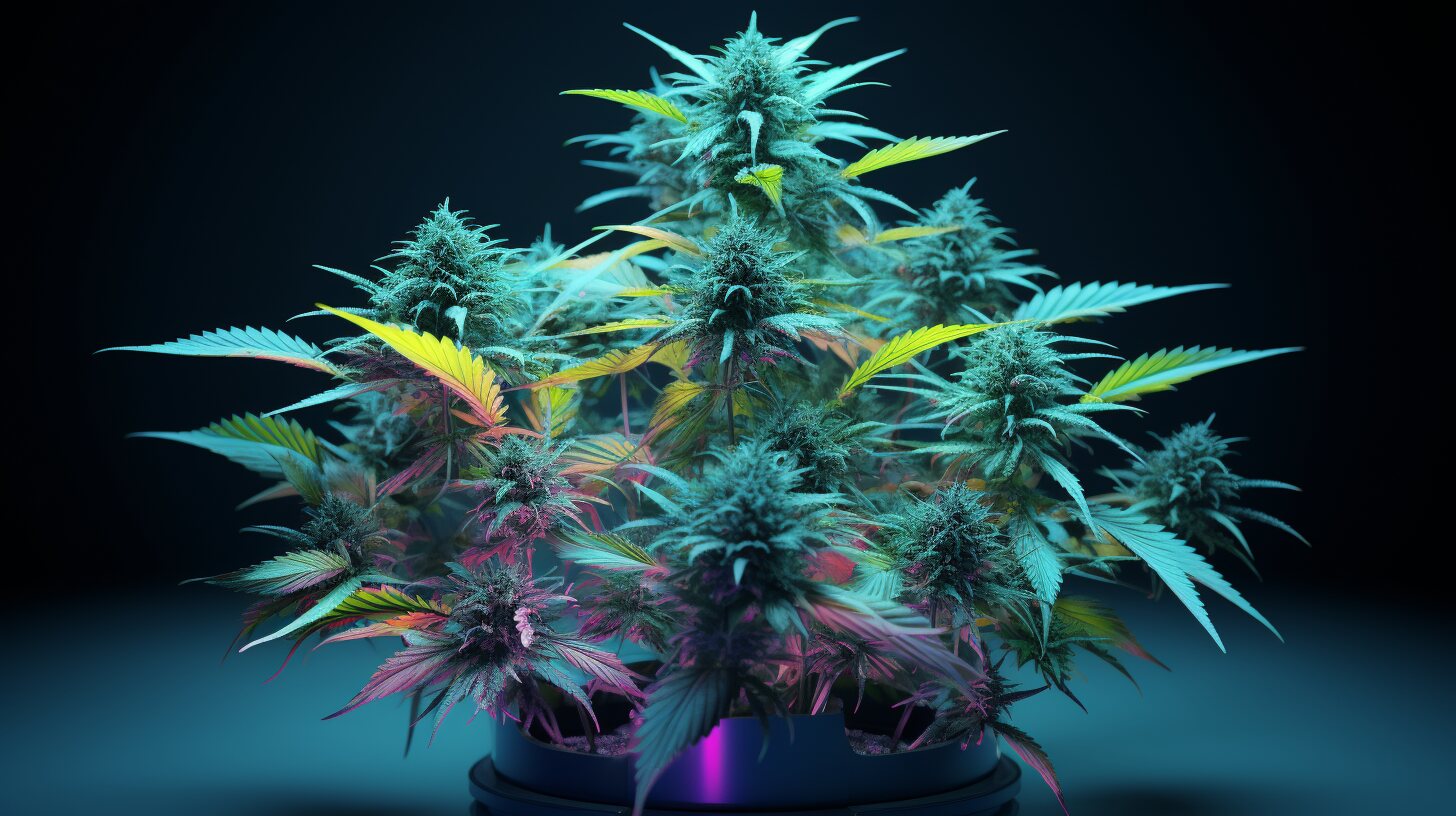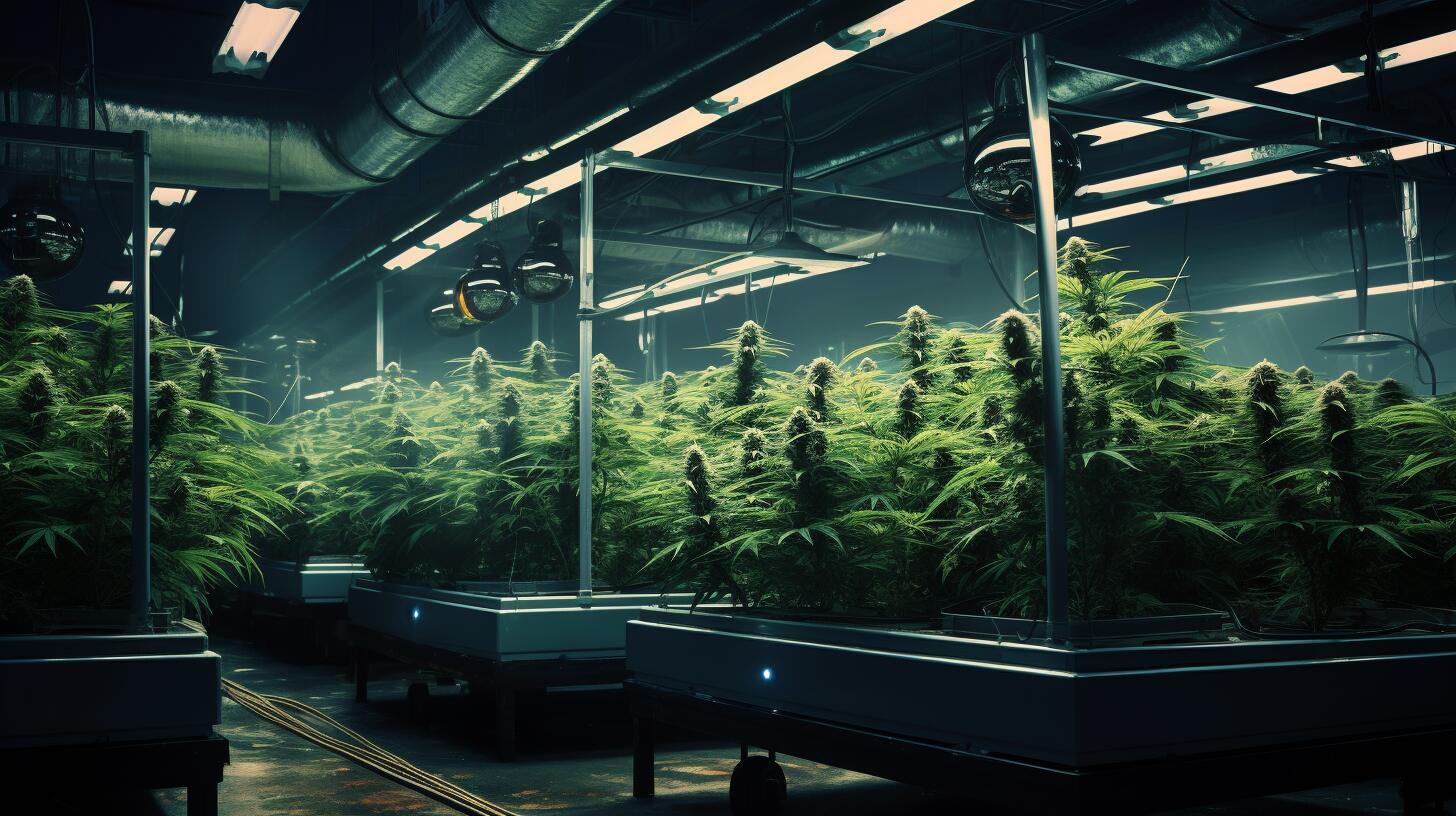Hydroponic weed might just be the future of cannabis cultivation, offering a revolutionary and sustainable approach to growing your favorite herb. This scientifically grounded technique enhances growth rate, potency, and yield, outstripping traditional soil-based methods.
With hydroponics, you control the environment, optimizing the conditions to yield a healthier, more verdant crop.
In this guide, we will walk you through the process of setting up your hydroponic system and growing weed like a professional, all from the comfort of your own home. Welcome to the future of cannabis cultivation - let's dive in!
Getting Started with Hydroponic Weed Cultivation
This innovative approach uses nutrient-rich water to nourish plants. It offers faster growth rates and higher yields compared to traditional soil gardening.
Choosing the Right Hydroponic System for You
Selecting a hydroponic system is crucial to your cultivation success. There are several types. Each has unique features and is suitable for different growers and spaces.
Deep Water Culture (DWC): Ideal for beginners, featuring plants suspended in nutrient-rich water.
Ebb and Flow: A versatile system that floods and drains the grow tray at regular intervals.
Nutrient Film Technique (NFT): Constantly flows nutrient solution over roots. It is great for limited spaces.
Aeroponics: Advanced, with roots hanging in air and misted with nutrients.
Drip Systems: Delivers nutrients directly to each plant, suitable for larger setups.
Read More: Hydroponic vs. Soil Cannabis Cultivation
Essential Equipment and Supplies List
Equipping yourself with the right tools and supplies is fundamental. This list covers everything needed to kickstart your hydroponic weed cultivation journey.
Basic Equipment: Including hydroponic systems, grow lights, pH meters, and nutrient reservoirs.
Nutrients and Supplements: A guide to choosing hydroponic nutrients essential for weed growth.
Environmental Control Tools: Importance of fans, humidifiers, and temperature controls for creating optimal growing conditions.
Monitoring and Maintenance Tools: It's important to have pH testers, EC meters, and other monitoring tools to keep a balanced hydroponic environment.
Read More: Growing Weed in a Tent
Seed Selection and Germination
This stage sets the foundation for the health and productivity of your plants. Choosing the right seeds and ensuring they germinate successfully is not just a matter of technique but also an art form in hydroponics.
Choosing the Right Cannabis Seeds for Hydroponic Growth
The success of your hydroponic garden largely depends on the quality and type of cannabis seeds you choose. This section will guide you through:
Seed Types: There are different types of cannabis seeds: indica, sativa, and hybrid. They are suited for hydroponic cultivation.
Quality of Seeds: How to identify high-quality cannabis seeds that are more likely to thrive in a hydroponic setup.
Strain Selection: Selecting cannabis strains based on desired effects, growth characteristics, and suitability for hydroponic environments.
Step-by-Step Guide to Germinating Your Marijuana Seeds
Germination is the first critical step in your plant's life cycle. This guide will walk you through a foolproof germination process tailored for hydroponic systems:
Preparation: Setting up the ideal environment for germination.
Germination Techniques: Detailed steps for popular methods like the paper towel method, direct planting, and using starter cubes.
Transition to Hydroponic System: Safely transfer germinated seeds to your chosen hydroponic setup.
Troubleshooting Common Germination Issues
Even with the best preparations, germination can sometimes encounter problems. This section provides solutions to common issues:
Identifying Problems: Recognizing signs of poor germination, such as slow sprouting or mold growth.
Practical Solutions: Addressing issues related to moisture levels, temperature, and seed quality.
Preventive Measures: Tips to minimize germination problems in future cycles.
Nutrient Solutions and Water Management
The cornerstone of any successful hydroponic system is the nutrient solution. This liquid solution is the lifeblood of your plants. It provides all the essential elements they need to grow and thrive. Crafting the perfect mix involves understanding the specific nutritional requirements of cannabis during different stages of its growth cycle.
Key components include nitrogen, phosphorus, potassium, and various micro-nutrients. Each plays a unique role in plant development. It's crucial to use a high-quality hydroponic fertilizer. Adjust the nutrient concentration for the growth stage. Tailor it from vegetative to flowering growth.
The Art of Balancing pH and Nutrient Levels
Maintaining the right pH and nutrient levels in your hydroponic system is more than just a routine task. It's an art that requires precision and attention. The ideal pH level for cannabis in hydroponics generally ranges between 5.5 and 6.5.
Keeping the pH within this range ensures that plants can effectively absorb nutrients. Regular testing and adjusting of pH levels are essential, using pH up or down solutions as needed.
Similarly, the electrical conductivity (EC) of the solution, indicating nutrient strength, should be monitored and adjusted to prevent nutrient burn or deficiency, ensuring your plants receive the right amount of nutrients at all times.
Scheduling and Managing Watering Cycles
In hydroponics, watering isn't just about the frequency. It's also about the timing and duration of watering cycles. These factors play a significant role in plant health and yield. The key is to provide enough water to keep the roots moist. However, do not give them so much that they become waterlogged. This risks oxygen deprivation.
The size of your plants, the type of hydroponic system used, and environmental conditions all influence your watering schedule. In most systems, a cycle of frequent, short watering is more effective than less frequent, long watering sessions.
This approach ensures a steady supply of water and essential nutrients. It allows enough oxygen to reach the roots. This promotes healthy plant growth and prevents root diseases.
Vegetative and Flowering Stages
Navigating the Vegetative Stage
During the vegetative stage, cannabis plants grow robustly. This is when they develop most of their leaves and branches. During this stage, your plants require longer daylight hours. Typically, they need 18 hours of light and 6 hours of darkness.
The focus should be on providing many nitrogen-rich nutrients. This supports rapid growth. It's also a time for key cultivation practices. Topping or training your cannabis plants to maximize light exposure and air circulation is crucial for healthy development. For example.
Transitioning to the Flowering Stage
Transitioning to the flowering stage is a critical shift in your hydroponic cannabis cultivation. This stage is triggered by altering the light cycle to 12 hours of light and 12 hours of darkness. This shift signals the plants to start developing buds. It's essential to switch to a nutrient solution higher in phosphorus and potassium. They are key to bud formation and development.
This stage also requires careful environmental control. Maintaining optimal temperature and humidity is crucial for bud development. Additionally, it's important to minimize stress on the plants during this phase. Stress can affect the quality and quantity of the final yield.
Read More: What is The Difference SOG vs SCROG
Optimizing Conditions for Maximum Yield
The goal of the flowering stage is not just to produce buds but to maximize their size, density, and potency. This requires a balanced approach to lighting, nutrition, and environmental management.
Proper light intensity and spectrum are crucial. Many hydroponic growers switch to high-pressure sodium lights during flowering. They do this for the optimal spectrum.
Carefully manage nutrient solutions to avoid nutrient burn. Ensure plants have enough resources for bud development.
Monitoring and adjusting environmental factors like temperature, humidity, and CO2 levels can also significantly impact the quality of your harvest.
Regularly inspect your marijuana plants for pests and diseases. They can quickly compromise health and productivity.
Read More: Lighting Schedules for Autoflowering Cannabis
Harvesting and Curing
Determining the right time to harvest your cannabis is critical. It ensures the highest quality and potency. Here are key indicators to watch for:
Trichome Color and Clarity: Use a magnifying glass to examine the trichomes on the buds. When most trichomes are milky white with some amber, it's usually the prime time to harvest.
Pistil Coloration: Observe the color of the pistils or hairs on the buds. When about 70-90% have darkened and curled, it's a sign of maturity.
Overall Plant Appearance: A mature marijuana plant will have a robust bud development and a slight yellowing of the leaves.
The Harvesting Process: Techniques and Tips
Harvesting should be done carefully to preserve the quality of the buds. Here's how to approach it:
Timing: Harvest early in the morning when the plant's terpene profile is at its peak.
Method: Use sharp, clean scissors or pruning shears to cut the branches.
Handling: Handle the buds gently to avoid damaging the trichomes.
Prepare For Drying: Trim off the large fan leaves. Hang the branches upside down in a controlled environment for drying.
Curing Your Weed: Best Practices
Curing is essential for enhancing the potency, weed flavor, and overall quality of the buds. Follow these steps for effective curing:
Initial Drying: Dry the harvested buds in a dark, well-ventilated room with a consistent temperature and humidity level for about 7-10 days.
Jar Curing: Once the stems snap but the buds aren’t too dry, transfer them to airtight jars. Fill the jars ¾ full and store them in a cool, dark place.
Burping: Open the jars several times a day for the first week to let out moisture and replenish oxygen. After the first week, reduce it to once a day.
Duration: Cure your buds for at least two weeks, though a longer cure of up to six weeks can further improve quality.
Common Challenges and Solutions in Hydroponic Cultivation
Identifying and Addressing Nutrient Deficiencies
Nutrient deficiencies can significantly impact the health and yield of your hydroponic cannabis. Recognizing and correcting these deficiencies is crucial:
Nitrogen Deficiency: Yellowing of lower leaves. Solution: Increase nitrogen levels in your nutrient solution.
Phosphorus Deficiency: Darkening of leaves and stunted growth. Solution: Adjust your nutrient mix to include more phosphorus.
Potassium Deficiency: Browning of leaf edges. Solution: Enhance potassium concentration in your nutrient solution.
Magnesium and Calcium Deficiencies: Common in hydroponics, leading to leaf curling and spots. Solution: Use Cal-Mag supplements as a preventative measure.
Managing Pests and Diseases
Pests and diseases can thrive in hydroponic systems if not managed properly:
Root Rot: Caused by poor oxygenation or overwatering. Solution: Ensure adequate oxygenation of nutrient solution and proper water management.
Spider Mites and Aphids: Can infest and damage plants. Solution: Use organic pesticides and introduce natural predators like ladybugs.
Fungal Diseases: Such as powdery mildew. Solution: Maintain proper air circulation and humidity levels; use fungicides when necessary.
Overcoming Environmental Challenges
Creating and maintaining the ideal environment is essential for hydroponic success:
Temperature Fluctuations: Can stress plants. Solution: Use heaters or coolers to maintain a consistent temperature.
Humidity Imbalances: High humidity can lead to mold, and low humidity can stress plants. Solution: Use dehumidifiers or humidifiers to regulate.
Inadequate Lighting: Can hinder growth. Solution: Ensure proper light intensity and spectrum for each growth stage.
Frequently Asked Questions
Can I reuse the nutrient solution in my hydroponic system?
Yes, the nutrient solution in hydroponic systems can often be reused. However, it's crucial to regularly check and adjust its pH and nutrient levels. This ensures it remains suitable for plant growth.
How do I prevent algae growth in my hydroponic system?
To prevent algae growth, reduce light exposure to nutrient solutions. Maintain cleanliness. Consider adding beneficial bacteria that compete with algae. Regularly cleaning the system also helps in controlling algae.
Is hydroponic weed cultivation faster than soil-based cultivation?
Yes, hydroponic cultivation typically leads to faster growth and shorter harvest times compared to soil-based cultivation. This is because it allows for more precise control over nutrients and environmental conditions.
Can I grow different strains of cannabis together in one hydroponic system?
Yes, you can grow different strains together in one system. However, it's important to consider their varying nutrient and environmental needs. Strains with similar growth patterns and flowering times are usually more compatible.
How much electricity does a hydroponic weed growing system use?
A: The electricity usage depends on the size of your setup and the type of equipment used, such as lights and pumps. LED lights and energy-efficient pumps can help reduce electricity consumption.
What is the best water temperature for a hydroponic cannabis system?
The ideal water temperature for hydroponic cannabis systems is typically between 65-70°F (18-21°C). This range helps in maximizing nutrient uptake and preventing root diseases.
Can I use tap water for my hydroponic cannabis system?
Yes, you can use tap water, but you should test it and possibly treat it for chlorine, chloramine, and excessive mineral content. Using a water filter or letting the water sit out to evaporate chlorine is often recommended.
Embracing the Hydroponic Journey in Cannabis Cultivation
We're wrapping up our comprehensive guide on hydroponic weed cultivation. This innovative method offers a dynamic and efficient way to grow cannabis. Hydroponic cultivation offers precise control over nutrients and environmental factors. It also has the potential for higher yields and faster growth. This makes it a powerful alternative to traditional soil-based methods.
Key takeaways include the importance of selecting the right equipment and seeds. It's also important to meticulously manage nutrient solutions and watering cycles. Understanding the nuances of the vegetative phase and flowering phases is important, too. Additionally, addressing common challenges like nutrient deficiencies, pest and disease management, and environmental control is crucial for maintaining a healthy and productive hydroponic system.
Remember, every grower's journey is unique. Success in hydroponics comes with experimentation and experience. Embrace the challenges and rewards that come with this method. You may find yourself at the forefront of modern cannabis cultivation.


 Français
Français 